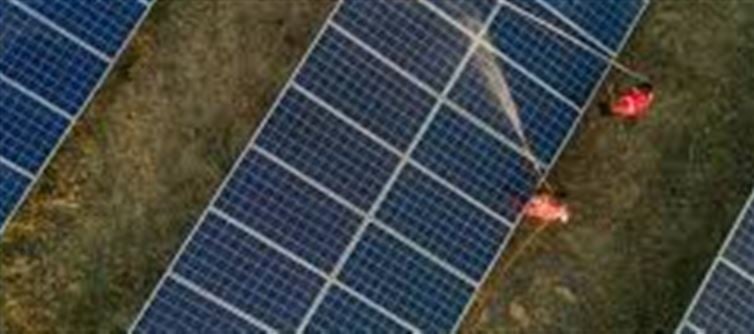
In India, where electricity bills have become a major financial burden for many households, especially for low-income families, the PM surya Ghar Muft Bijli Yojana is bringing significant relief. This ambitious government scheme promises zero electricity bills for eligible households, offering a dream of free power that is now becoming a reality for many.
1. What is PM surya Ghar Muft Bijli Yojana?
The PM surya Ghar Free electricity Scheme, also known as Muft Bijli Yojana, is a government initiative that aims to provide free electricity to economically weaker households. Under this scheme, eligible families will be provided with rooftop solar panels to generate their own electricity, significantly reducing or even eliminating their dependence on grid power.
By installing solar panels, households can produce up to 300 units of free electricity every month. This means that many families could completely eliminate their electricity bills, which is especially helpful in rural and semi-urban areas where power costs often make up a significant portion of household expenses.
2. Key Features of the PM surya Ghar Free electricity Scheme
· Zero electricity Bills: The main highlight of this scheme is that eligible families can now get zero electricity bills by installing rooftop solar panels.
· Up to 300 Units of Free Electricity: The solar power generated will be enough to meet the electricity needs of most households, with an average generation of 300 units per month.
· Subsidy on Installation: The government will provide a subsidy of up to 60% for the installation of solar panels, making it affordable for low-income families to access solar power.
· Sustainability and Clean Energy: This initiative promotes renewable energy by harnessing the power of the sun, reducing dependence on conventional grid electricity, and promoting eco-friendly practices.
· Beneficiaries: The scheme mainly targets low-income families living in rural and underprivileged urban areas who often struggle to afford high electricity bills.
3. Eligibility Criteria for PM surya Ghar Scheme
To qualify for the PM surya Ghar Free electricity Scheme, the following eligibility criteria need to be met:
· Income Criteria: The household must be below the poverty line (BPL) or belong to economically weaker sections (EWS).
· Location: The scheme is primarily aimed at rural and semi-urban households, but eligible urban slum dwellers may also benefit.
· Existing Power Supply: The family must already have electricity supply but struggles with the rising cost of power bills.
· Aadhar Card: Beneficiaries must have a valid aadhar card to avail the scheme.
4. Benefits of PM surya Ghar Free electricity Scheme
· Zero Power Bills: The biggest benefit is that households can eliminate their monthly electricity expenses, which can be a huge financial relief, especially for low-income families.
· Sustainable Living: The use of solar energy makes the household more sustainable, and families can take pride in contributing to a greener environment.
· Energy Independence: By generating their own power, beneficiaries will no longer have to rely on grid power, which can be expensive and unreliable in certain areas.
· Government Subsidy: The 60% subsidy on solar panel installation makes this scheme affordable even for families who may not have the upfront capital to invest in solar infrastructure.
· Job Creation and local Development: The scheme also promotes the solar industry and encourages local installation and maintenance jobs, contributing to economic growth in rural and underdeveloped areas.
5. How to Apply for the PM surya Ghar Free electricity Scheme
The application process for the PM surya Ghar Free electricity Scheme is simple and can be completed online. Follow these steps to apply:
1. Visit the Official Portal: Go to the official PM surya Ghar website hosted by the Ministry of New and Renewable Energy (MNRE).
2. Register Your Household: Fill out the application form with your Aadhar card and bank details. You’ll also need to mention your income category and location.
3. Submit Documents: Upload necessary documents such as Aadhar card, income proof, and electricity bill (if available).
4. Selection Process: Once your application is submitted, it will be verified by local authorities. If you're eligible, you will receive confirmation for solar panel installation.
5. Installation of Solar Panels: The government or its approved agency will install solar panels at your home. The process is typically quick, and most installations are done within a few weeks of approval.
6. Final Thoughts: A Game-Changer for Low-Income Families
The PM surya Ghar Free electricity Scheme is undoubtedly a game-changer for low-income families in India. With the rising costs of traditional electricity and the challenges faced by many households to pay hefty bills, this scheme offers a sustainable and cost-effective solution.
Not only does it promise zero electricity bills, but it also encourages the use of clean, renewable energy, making it a step towards a greener and more energy-efficient future for India. The financial relief it offers will make a significant difference in the lives of many citizens, especially in rural areas.
If you're a low-income household struggling with high electricity bills, the PM surya Ghar Free electricity Scheme could be the solution you’ve been waiting for. Apply now and step into a future where your electricity bills are no longer a burden!
Disclaimer:
The views and opinions expressed in this article are those of the author and do not necessarily reflect the official policy or position of any agency, organization, employer, or company. All information provided is for general informational purposes only. While every effort has been made to ensure accuracy, we make no representations or warranties of any kind, express or implied, about the completeness, reliability, or suitability of the information contained herein. Readers are advised to verify facts and seek professional advice where necessary. Any reliance placed on such information is strictly at the reader’s own risk.
.jpg)




 click and follow Indiaherald WhatsApp channel
click and follow Indiaherald WhatsApp channel